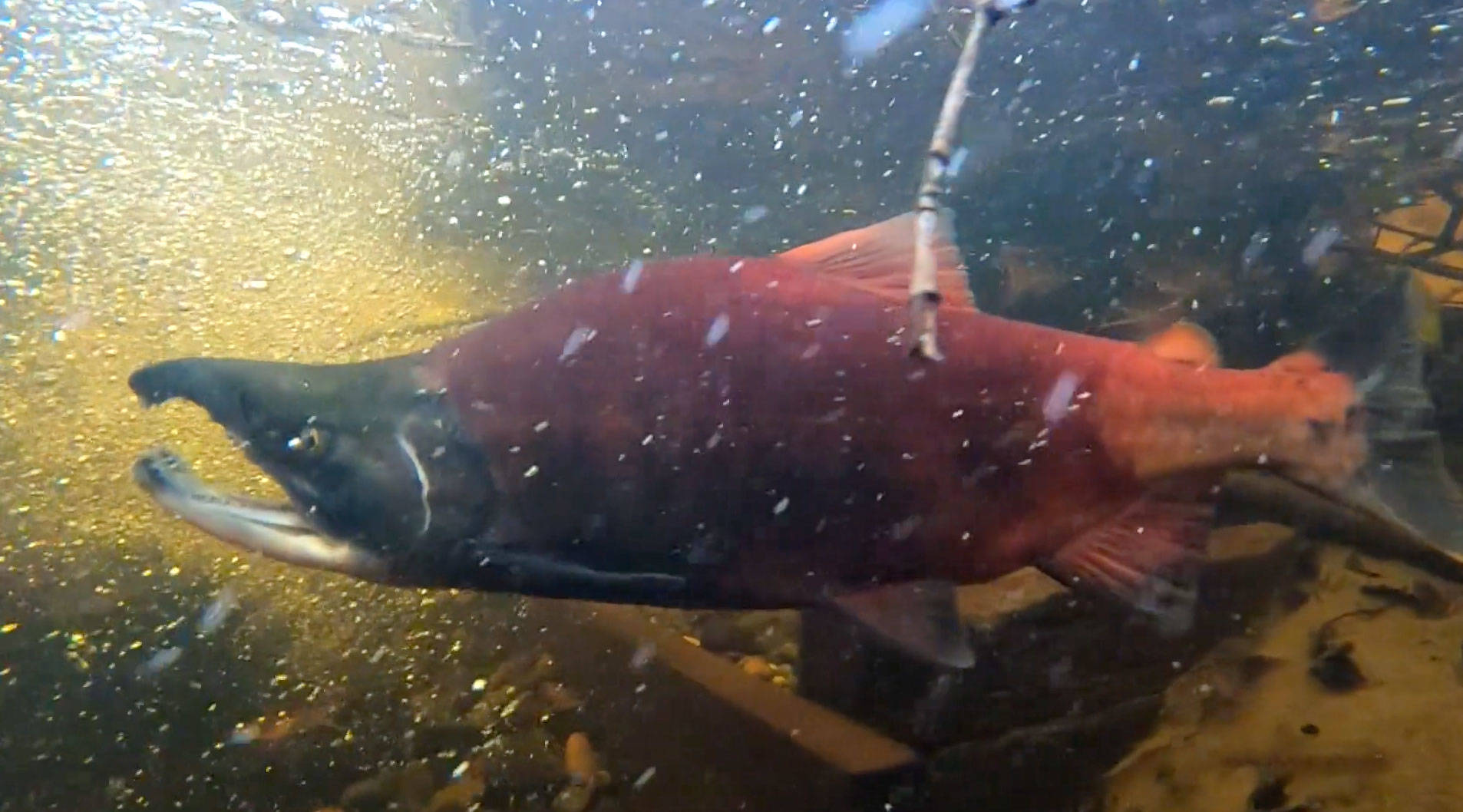A second batch of Lake Sammamish kokanee have been transferred to a hatchery on Orcas Island, marking another milestone in efforts to save the little red fish.
The hatchery is part of a last ditch effort to save the fish, which are a unique freshwater salmon species found in Lake Sammamish and surrounding tributaries. Their numbers have dwindled in recent years, to the point where King County officials started worrying they would go extinct without major intervention.
So the decision was last October to ship 250 kokanee fry to a hatchery in Orcas Island, where they will spend their days in a carefully controlled environment. When they spawn, those fry will be brought back to Lake Sammamish to boost its population.
This shipment, on Aug. 12, transferred another 250 fry to Orcas Island. They will join the fish already there for about 27 months.
The eight-month-old salmon fry were loaded into trucks and sent to the Long Live the Kings hatchery on Orcas Island. During the previous fry delivery, the fish were flown to the island, but social distancing requirements prevented that this time.
The kokanee fry are expected to produce up to 50,000 young kokanee who will begin return to Lake Sammamish in 2022 and over the following years.
Kokanee have been in the spotlight since May 2018, when King County Executive Dow Constantine announced the county and partner agencies would work to prevent the extinction of the little red fish. It came in the wake of an apocalyptic year for the kokanee, as only 20 returned to spawn in 2017, only five years after more than 18,000 returned.
It’s not known exactly why the fish are struggling, but county researchers think it has something to do with a phenomenon called ‘the squeeze.’ The squeeze happens during hot summers, when the top layer of water warms, forcing the cold-water-loving salmon deeper into the lake.
But in those deeper reaches, the oxygen level is often too low for the fish to survive.
And with recent hot summers in recent years, the layers of water in which the kokanee could survive may have been largely wiped out.
Even if there’s oxygen in the water, heat can stress fish, making them more vulnerable to disease, predators and parasites.
There’s also predators and invasive species, like the yellow perch, which can eat small fry.
Other efforts have been made to boost the kokanee population too. In October 2019, some 3,000 juvenile kokanee salmon were released into the lake by the county and Snoqualmie Indian Tribe.
And the county is collecting fish eggs and sperm, and freezing them to be used to breed more fish in the future.
Historically, there were up to three runs of kokanee in the lake, which began in September and stretched through December. but the two early runs went extinct in the 2000s.
Locals can help the salmon by not letting fertilizers drain into Lake Sammamish. And by keeping as much land as possible unpaved to allow more water to seep into the groundwater system and cool the lake.


